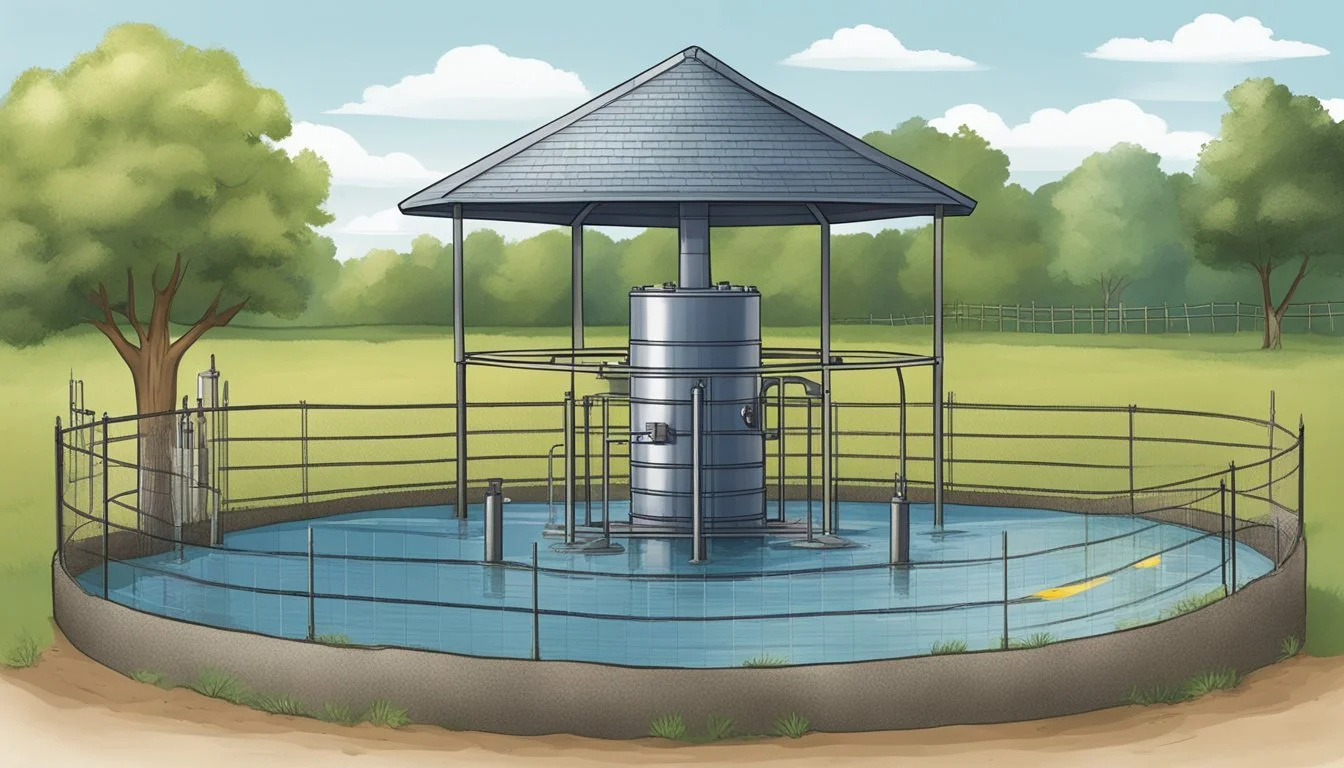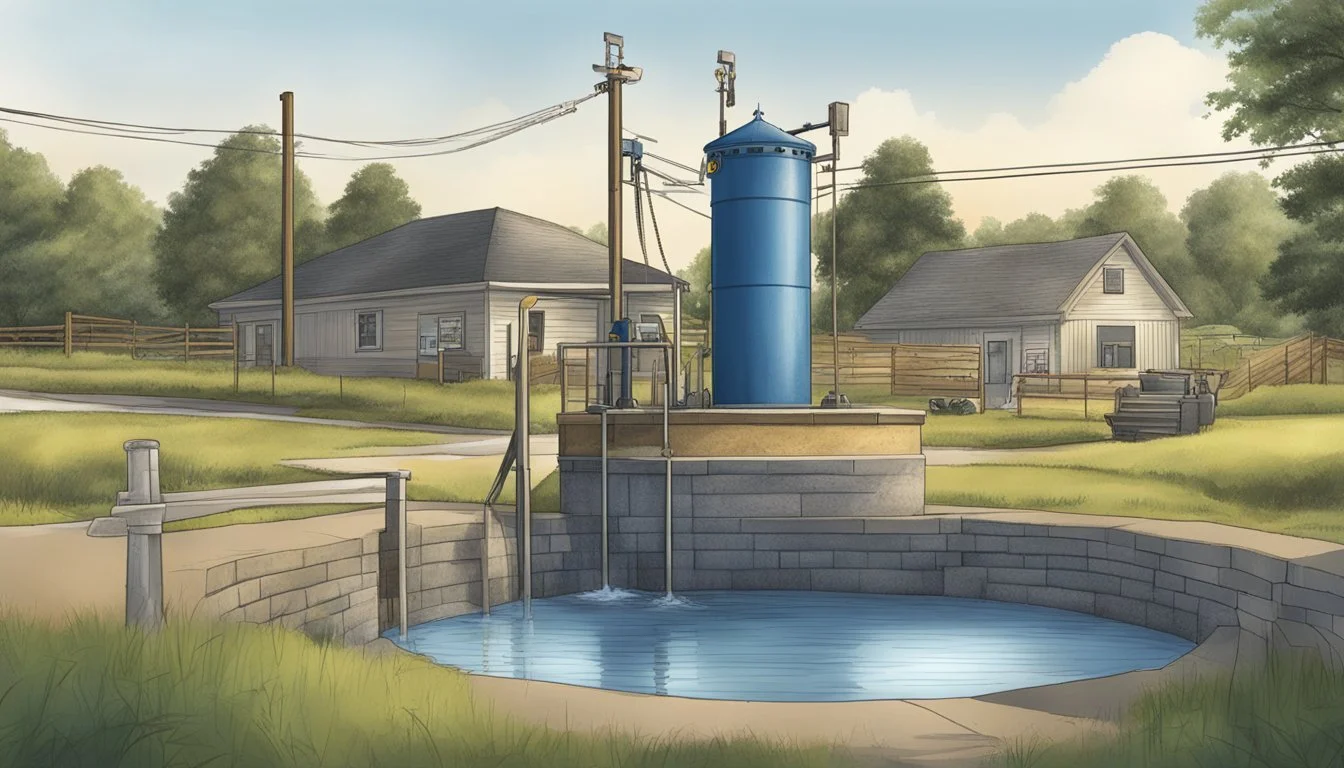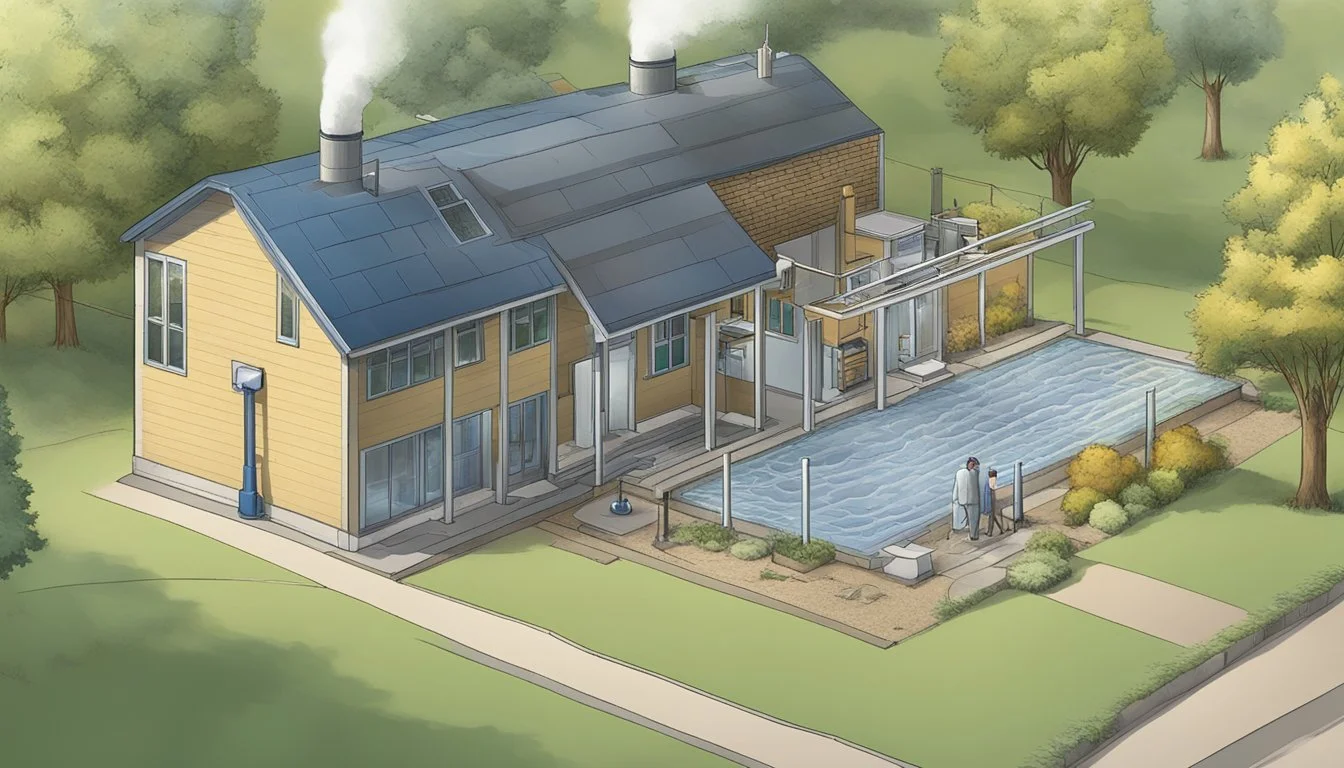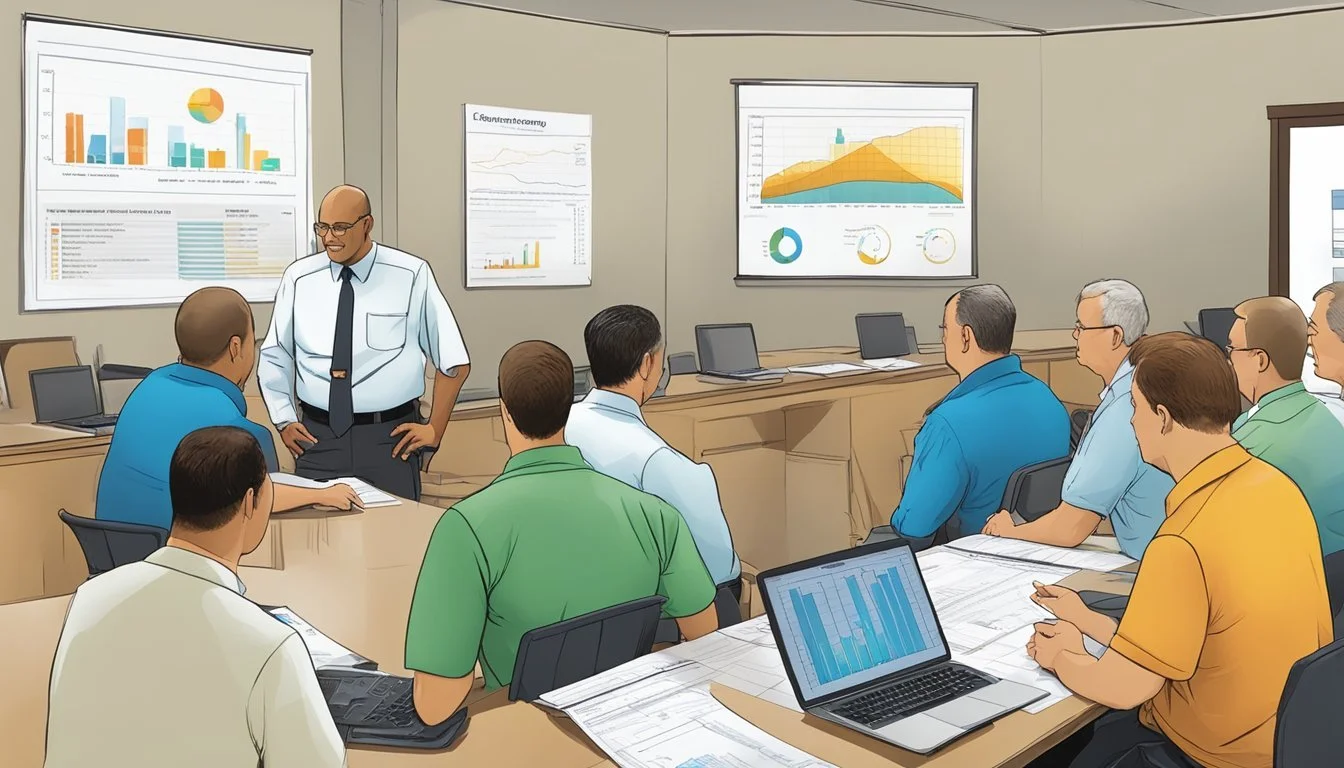Minnesota Water Well Regulations
Your Guide to Compliance and Safety
In Minnesota, the process of constructing new water-supply wells is governed by detailed regulations to ensure the safety and sustainability of water resources. The Minnesota Department of Health is tasked with the enforcement of these regulations, which are codified under Minnesota Statutes, chapter 103I, and Minnesota Rules, chapter 4725. These laws are crucial for protecting public health by maintaining the quality of drinking water and the integrity of groundwater.
The Well Management Section within the Department is responsible for overseeing the implementation of these regulations. This includes the administration of well construction, as well as monitoring and maintenance practices. Well owners and contractors must adhere to stringent notification and fee submission procedures before commencing any drilling activities. The emphasis on regulation helps in preventing contamination and ensuring the proper functionality of water wells across the state.
Ensuring compliance with these regulations involves a collaborative effort between well owners, contractors, and state regulators. Insight into the well construction and sealing laws can be found in the comprehensive rules handbook provided by the Minnesota Department of Health, which details the enforceable requirements and standards for all involved parties. Such collaboration and compliance are essential for safeguarding Minnesota's groundwater, which is a vital resource for residents and ecosystems throughout the state.
Minnesota Water Well Regulations Overview
In Minnesota, water well regulations are comprehensive and designed to ensure that the construction, maintenance, and sealing of wells protect public health and ground water resources.
Legislative Framework
Minnesota's legislative framework for water well regulations is established through Minnesota Statutes, specifically Chapter 103I. The statutes are complemented by Minnesota Rules, particularly chapters 4725 and 4727, which outline the requirements and standards for water well construction, maintenance, and sealing. Throughout the years, these regulations have been amended to keep up with current practices and to protect both public health and the environment.
Minnesota Department of Health Authority
The Minnesota Department of Health (MDH) has the authority to enforce the water well regulations laid out in the statutes and rules. The MDH is responsible for accrediting laboratories in Minnesota that test water samples for contaminants, as seen in the wide-ranging oversight of private well owners to public water systems. Furthermore, the MDH offers educational resources such as the Well Owner's Handbook, aimed at guiding individuals through the proper procedures for testing and maintaining their wells.
Well Construction and Maintenance
Minnesota's regulations for water well construction and maintenance are designed to ensure that wells are built and maintained to safeguard public health and groundwater resources. These standards are set forth by the Minnesota Department of Health to help well owners and contractors adhere to safe practices.
Construction Standards
Wells in Minnesota must be constructed according to specific standards to prevent contamination of the water supply. The Minnesota Department of Health enforces these standards, which include proper site selection, design, and construction practices. Only licensed contractors are allowed to construct wells, ensuring compliance with health and safety codes.
Materials and Installation
The selection of materials for well construction is stipulated by state regulations. All materials used must be durable, corrosion-resistant, and approved for potable water use. This includes casings, screens, and other well components that come into contact with groundwater. Proper installation techniques are crucial and include the sealing of joints and the annular space around casings to prevent surface contaminants from entering the well.
Maintenance Requirements
Regular maintenance is essential to the integrity and safety of water wells. The Well Management Program outlines the maintenance activities required for wells, including periodic inspection, cleaning, and testing of water quality for contaminants like bacteria and nitrates. Well owners are responsible for ensuring their wells are in good working condition and free from obstructions or defects.
Sealing of Unused Wells
Unused or abandoned wells must be properly sealed to prevent them from becoming pathways for contaminants to reach groundwater. The sealing process, often referred to as "well sealing," involves filling the well with grout to create a permanent barrier. The regulation of well and boring construction and sealing also covers the sealing of unused borings, including those for geothermal heat exchangers, to prevent any adverse impact on the surrounding environment. Licensed contractors must carry out the sealing process according to state guidelines.
Well Operation Regulations
In Minnesota, the operation of water wells is subject to stringent regulations to ensure the protection of water resources and public health. The two key aspects of these regulations are the permitting process and the requirements for water use and reporting.
Permitting Process
The permitting process for well operation in Minnesota necessitates a preliminary well construction assessment. This includes an evaluation of the proposed well location, its potential impact on the environment, and alignment with health standards. Well owners or contractors must obtain the appropriate water permits from the Minnesota Department of Health (MDH) and the Minnesota Department of Natural Resources (DNR) before proceeding with well construction.
MDH Permits: Necessary for assuring the well's compliance with health and safety regulations.
DNR Water Permits: Required for the appropriation and use of water, especially for wells with the capacity to pump more than 10,000 gallons per day or 1 million gallons per year.
Water Use and Reporting
Once a well is operational, well owners must adhere to water use and reporting regulations. This involves keeping a record of water usage and submitting an annual water use report to the DNR. Requirements can differ based on the size and type of well, as well as the purpose for which the water is being extracted.
Existing Permits: Operators of wells with existing permits must report water use to ensure it's within the permitted amounts.
Annual Reporting: The DNR stipulates that all water permit holders, including well operators, report their water use annually. This data is crucial for water resource management.
Compliance with these regulations helps to maintain the integrity of Minnesota's water resources and ensures the sustainable use of groundwater.
Water Quality and Public Health
Ensuring that water quality is maintained is pivotal for protecting public health. Adherence to strict water testing and monitoring practices, coupled with measures to guarantee the safety of drinking water and effective contaminant isolation techniques, is essential for safeguarding Minnesota's communities.
Water Testing and Monitoring
In Minnesota, public water systems are subject to regular water quality tests to detect contaminants like bacteria, nitrates, and harmful chemicals. The Minnesota Department of Health emphasizes the critical nature of these tests as they not only reflect current water quality but also help predict and prevent potential health risks. Routine monitoring of wells complements these efforts, ensuring early detection and resolution of any issues.
Frequency of Testing: Public systems test water regularly, while private well owners are advised to conduct water quality tests annually.
Drinking Water Safety
Drinking water safety is paramount and is achieved through several enforceable standards, which include the use of proper filtration and disinfection techniques. For example, Minnesota's regulations necessitate that public water systems meet safety requirements as stringent as those laid out in the Safe Drinking Water Act, ensuring that water is safe to drink and free from contaminants.
Methods of Filtration and Disinfection: Employ various strategies from activated carbon filtration to chlorination.
Responsibility: It is incumbent upon water suppliers and private well owners to ensure water is safe.
Contaminant Isolation
Contaminant isolation in Minnesota involves maintaining safe distances between potential sources of contamination and water wells. This practice is integral in preventing hazardous substances from entering the water supply. The state stipulates clear isolation distances that must be met to protect the water integrity, as detailed in guidelines for Well and Boring Construction and Sealing.
Isolation Distances: Specified minimum distances from potential contamination sources to wells.
Impact on Water Quality: Effective isolation aids in maintaining the purity of the water supply.
Proactive measures in water testing and monitoring, assuring drinking water safety, and implementing strict contaminant isolation protocols collaborate to preserve the sanctity of Minnesota's water and the health of its residents.
Geothermal Systems Regulation
In Minnesota, the regulation of geothermal heating and cooling systems is stringent, ensuring the safety and environmental sustainability of these renewable energy sources. Installation and use of geothermal technologies are guided by defined procedures and standards.
Geothermal System Installation
The installation of geothermal heating and cooling systems must comply with the guidelines set by the Minnesota Department of Health. These rules are detailed on their website for clarity and ease of access. Installers and property owners must acknowledge the earth's consistent internal temperature, which geothermal systems leverage for heat exchange. For instance, in Minnesota, the ground temperature typically ranges between 40-50 degrees Fahrenheit, which is ideal for geothermal applications.
Borings for Geothermal Systems
When it comes to geothermal heat exchangers, installing borings enters a regulated area where specific permits are required. This is crucial to ensure minimal environmental impact. The Minnesota Rules Chapter 4725 specifies the notification procedures for well sealing, which includes the proper construction of borings for geothermal systems. Each step, from the permitting process to the installation, is monitored for compliance to safeguard both the water supply and the structural integrity of the borehole.
Environmental Protection Measures
In Minnesota, meticulous standards are set to protect water quality. These include specific measures to safeguard groundwater from contamination, regulate interactions between surface water and groundwater, and mitigate the risks associated with flood events.
Groundwater Preservation
Minnesota law establishes protective distances between wells and potential contaminant sources such as fuel storage tanks, septic systems, and feedlots. These stipulations are critical to prevent pollutants from affecting the quality of groundwater which is vital for public health and ecosystem sustainability.
Surface Water Interaction
Interactions between groundwater and surface waters are crucial in maintaining healthy aquatic ecosystems. Efforts to prevent infested waters from negatively impacting groundwater include the design and implementation of diversion controls, ensuring that infestation does not spread or contaminate the water tables.
Flood Risk Management
In areas prone to flooding, regulatory measures by the Minnesota Department of Health require that well construction and maintenance consider flood risks. These regulations are in place to secure wells and prevent floodwaters from becoming a pathway for contaminants to enter aquifers.
Regulation Enforcement and Compliance
In Minnesota, the enforcement of well regulations and the assurance of compliance are critical measures taken to protect groundwater resources. The Minnesota Department of Health (MDH) has established a comprehensive framework to ensure that the installation and maintenance of wells adhere to state laws.
Inspections and Audits
The Well Management Section of the MDH conducts regular inspections and audits to ensure compliance with Minnesota's well construction and sealing codes. These checks are designed to prevent contamination of drinking water sources. Well contractors may be subject to unannounced inspections or scheduled audits, in which MDH representatives closely examine the construction, reconstruction, and sealing of wells.
Fines and Fees
Non-compliance with regulations may result in penalties, including fines and fees. The MDH has the authority to impose financial penalties for violations of well standards. These are calculated based on the severity and nature of the infraction. Additionally, well construction and sealing activities may incur specific fees outlined by the state. Interested parties can obtain further fee information by contacting the MDH Well Management Section at 651-201-4600 or toll-free at 800-383-9808.
Professional Responsibility
In the state of Minnesota, stringent regulations govern the actions and qualifications of water well contractors and drillers to ensure the protection of groundwater resources. These regulations, designed to protect public health and the environment, stipulate clear guidelines and responsibilities for licensed professionals in the field.
Contractor Certification
Minnesota law mandates that all well contractors must be certified to engage in well construction activities. Contractors gain certification through a process that encompasses both testing and continuing education, ensuring they remain informed about the current laws and regulations pertaining to well construction and water quality. The Well Owner's Handbook serves as a comprehensive guide for contractors to follow best practices in well construction, water testing, and more.
Driller Responsibilities
Drillers are responsible for various essential aspects of well construction and maintenance. They are obliged to:
Notify the Minnesota Department of Health before commencing any drilling operation.
Follow Minnesota's well construction code during both the construction and sealing of wells.
Ensure water testing for contaminants like coliform bacteria and nitrates, as recommended in the Well Owner's Handbook, thereby safeguarding the quality of groundwater resources.
By adhering to these requirements, drillers play a crucial role in the protection of Minnesota's water wells and the wider water supply system. The clear definition of these responsibilities leads to the consistent delivery of safe, clean groundwater to Minnesota residents.
Public Outreach and Education
In Minnesota, the focus on public outreach and education is essential to ensure the safety and regulation compliance of both public and private wells. Robust programs and clear communication channels are in place to support well owners and the general public.
Well Notification Requirements
Under the guidelines set by the Minnesota Department of Health (MDH), well owners, both public and private, are required to notify authorities about well construction, maintenance, and sealing activities. The MDH Well Management Program has a detailed protocol that dictates the notification process. Compliance with these requirements is crucial for maintaining the health of Minnesota's water supply.
Notification before construction: Ensures proper site and method approval.
Reporting post-construction: Helps monitor water quality and supply.
Public Resources and Contact Information
Minnesota prioritizes easy access to information and resources for well owners. The MN Department of Natural Resources (MNDNR) operates a permitting and reporting system that provides guidance on water use and protection. For further assistance or inquiries, individuals can contact the agencies through dedicated 'Contact Us' channels provided on their respective websites.
Online MDH Resources: Manuals, guidelines, and FAQs for well owners.
MNDNR Permitting: Clear processes for obtaining water appropriation permits.
Resource
MDH
MNDNR
Contact Information
Available on the MDH Website
Available on the MNDNR Website
The Minnesota Department of Health and the Department of Natural Resources are committed to safeguarding the state's water resources through comprehensive public outreach and education. Their resources empower Minnesotans to effectively manage their water wells, ensuring the longevity and safety of the water supply.
Emerging Issues and Innovations
In addressing contemporary challenges in water safety, Minnesota has turned its focus towards innovative technologies. These advancements have been cultivated to enhance water quality and compliance with health standards, particularly through sophisticated treatment methods and proactive monitoring.
Advanced Filtration Technology
New filtration methods, such as reverse osmosis, represent a leap forward in Minnesota's capability to provide clean drinking water. This technology utilizes a semi-permeable membrane to remove ions, unwanted molecules, and larger particles from drinking water. Reverse osmosis not only enhances water quality but also plays a crucial role in mitigating the effects of contaminants.
Efficacy: Removes up to 99% of dissolved salts (ions), particles, organics, bacteria, and pyrogens.
Cost-Effectiveness: Longer lifespan and less energy-intensive compared to traditional filtration.
Smart Monitoring Systems
The implementation of smart monitoring systems offers a real-time approach to managing Minnesota's water resources. These systems deploy sensors within water infrastructure to constantly check for changes in quality and pressure, enabling immediate responses to potential issues in flowing wells and other water systems.
Real-Time Data: Immediate detection and alerts for abnormalities in water flow or quality.
Predictive Maintenance: Prevents major breakdowns by identifying issues before they escalate.
By leveraging both advanced filtration and smart monitoring, Minnesota aims to stay at the forefront of ensuring safe and sustainable drinking water for all residents.
Frequently Asked Questions
In navigating the complexities of water well regulations in Minnesota, there are several common inquiries that stand out. These questions address critical aspects of well construction, permitting, setbacks, water quality, record accessibility, and associated costs within the state.
What are the specific codes and regulations governing water well construction in Minnesota?
Minnesota's well construction and drilling are guided by Minnesota Rules, chapters 4725 and 4727, which enforce standards to safeguard groundwater and public health. These rules cover aspects from well design to decommissioning.
What steps must be taken to obtain a well permit in Minnesota?
Individuals must apply through the Minnesota Department of Health and meet the criteria outlined in Minnesota Statutes, chapter 103I. The application process involves submitting plans and securing approval from the appropriate local authorities.
What are the legal requirements for setbacks of water wells from property lines in Minnesota?
The state mandates specific isolation distances between wells and potential contaminants to prevent pollution. These well isolation distance requirements are part of Minnesota's strategy to protect drinking water sources.
What protocols are in place for water quality testing of private wells in Minnesota?
Private well owners in Minnesota are encouraged to conduct regular water quality testing. The Department of Health provides resources, including information on water quality testing and accredited labs available for private well owners.
How can well sealing records be accessed in Minnesota?
Well sealing records, which are crucial for verifying the proper decommissioning of unused wells, are maintained by the Minnesota Department of Health. To access these records, one should contact the Well Management Section or visit their online resources.
What are the average costs associated with drilling and installing a private well in Minnesota?
While costs can vary widely based on factors such as depth and geology, the Minnesota Department of Health offers guidance on well construction which may include cost considerations. It is recommended to consult with licensed well contractors for detailed quotes.










